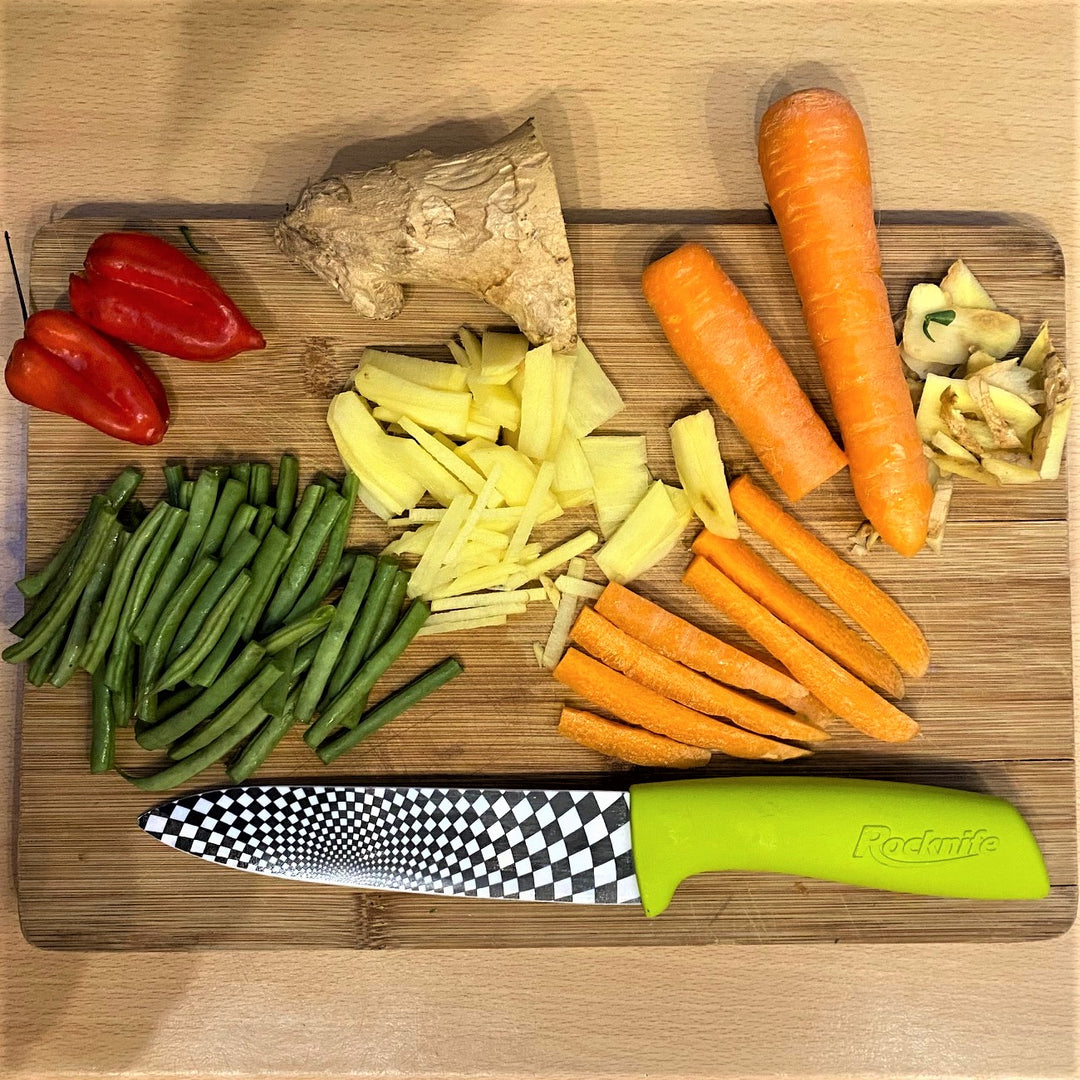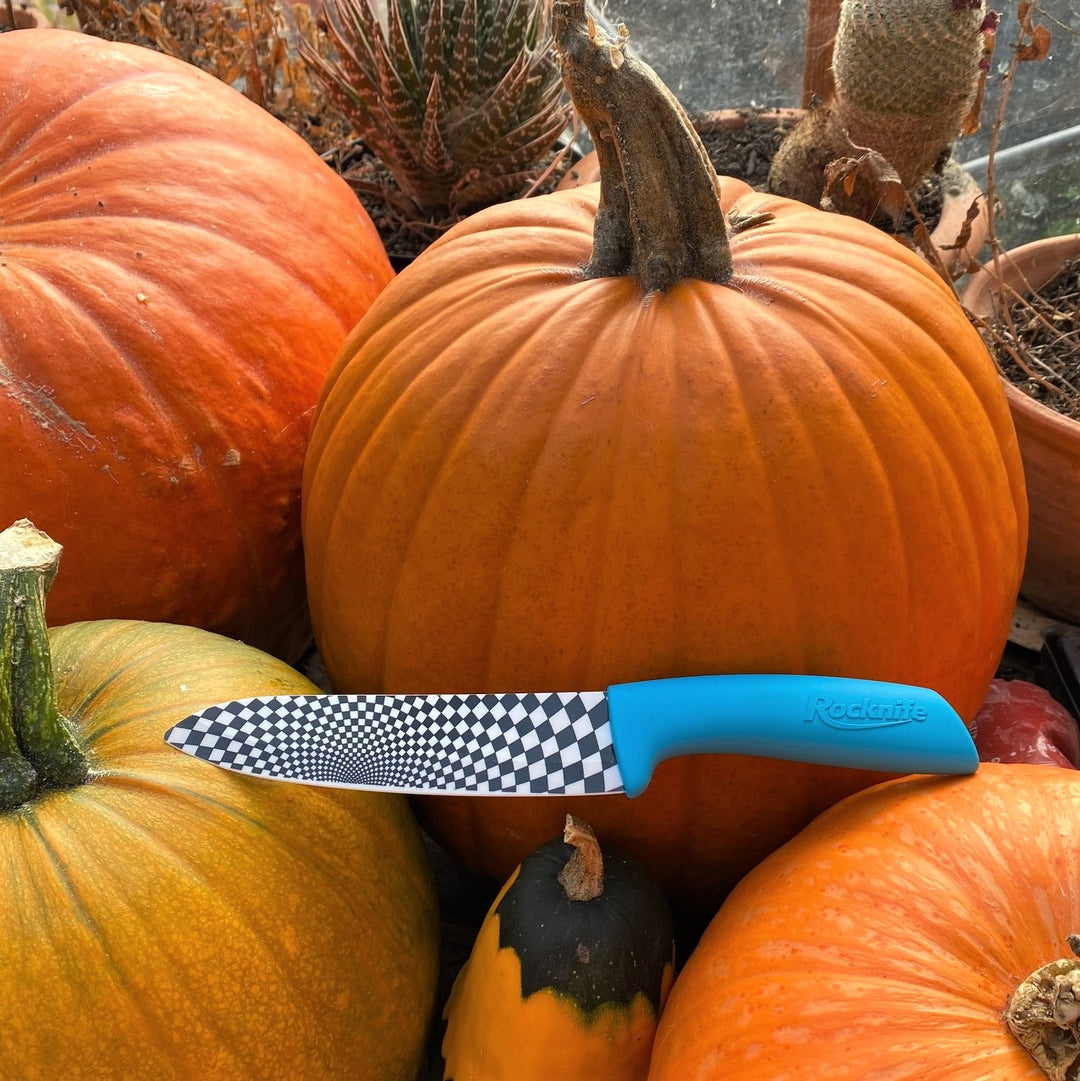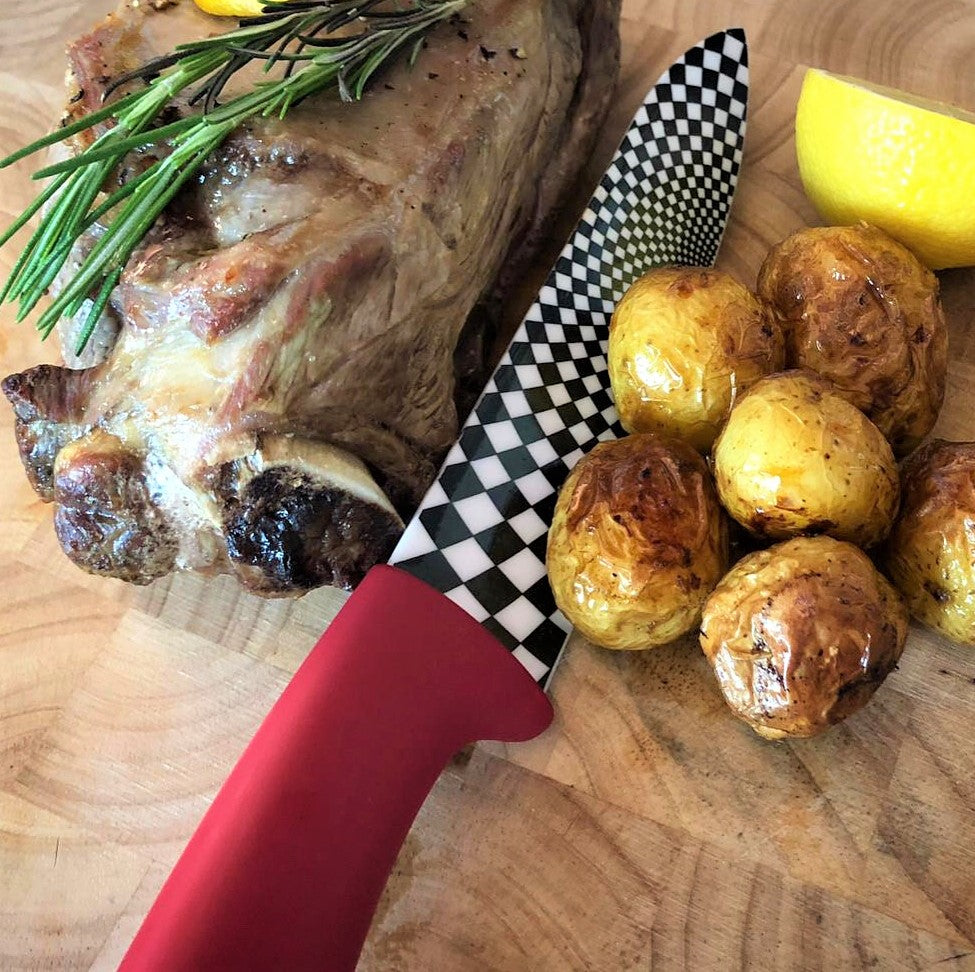If you’ve ever been in the kitchen of a professional chef, you’ll find an assortment of both steel and ceramic knives. That’s because neither type of knife is perfect for every situation. De-boning chicken, for example, is best done with a steel knife that won’t chip. Ceramic cutlery, however, is the best choice for finely slicing vegetables and fruit. If you’re an amateur chef in the making, or you’re buying your first set of knives, this guide will help you understand which knives are best suited to which kitchen tasks, and the most important knives that should be in your collection.
Buy Steel For…
Steel knives are best for any jobs that require smashing (such as garlic or ginger), prying (such as removing potato eyes) and cutting through frozen food or meat with bones. Because ceramic cannot replace steel cutlery in the kitchen, you’ll want a good mix of both.
Your starter set of knives should include the following steel varieties:
- 3-½ to 4″ Paring Knife. This knife will be used to slice, bone, fillet and peel food. Because you will need a good knife for de-boning, it should be made of steel.
- Steak knives. These knives will be used during dinner, and they will frequently be used with foods that have bones, like pork chops. Steel is the best way to go to prevent damage.
- Utility knife. You’ll use a utility knife for many miscellaneous tasks in the kitchen, including cutting cheese. While you can use ceramic to slice cheese, it tends to stick to the blade more than steel.
Buy Ceramic For…
Ceramic knives are definitely a different breed of knife, and they aren’t available in as diverse a selection of sizes and styles. Their blade is stronger than steel but more fragile, so they cannot be used to cut through bone or frozen foods. They truly shine when it comes to repetitive chopping actions and slicing, so choose ceramic knives for jobs involving vegetables and fruits.
Chopping with a ceramic knife is a treat, as the ultra sharp blade slides through vegetables so cleanly you barely feel the action. Most chefs also agree that the best way to prevent your eyes from tearing up while chopping onions is to use a very sharp knife. That’s because dull blades send a spray of onion juice into your face.
Your starter knife set should include the following ceramic knives:
- Chef’s knife. This is one of the most versatile and often used knives in the kitchen and it’s used to dice, chop, mince and carve meat. Ceramic chef knives are very easy to use and make quick work of any repetitive tasks.
- Paring knife. It’s a good idea to also buy a paring knife in ceramic as well for tasks that don’t require cutting into bone. Ceramic paring knives are perfect for deveining shrimp, peeling peppers and much more.
- Utility knife. This medium-sized knife has a larger blade than a paring knife but smaller than a chef’s knife. It also features a sharp point at the end, making it perfect for slicing, chopping, peeling and carving smaller foods. Many people use ceramic utility knives for slicing sandwiches, too.
Ceramic knives will not replace traditional steel knives in the kitchen, but they’ll quickly become your go-to knife when it comes to fruit and vegetable preparation. Of course, you’ll need a good mix of both steel and ceramic to perform any task in the kitchen and make cooking a real joy.











Leave a comment